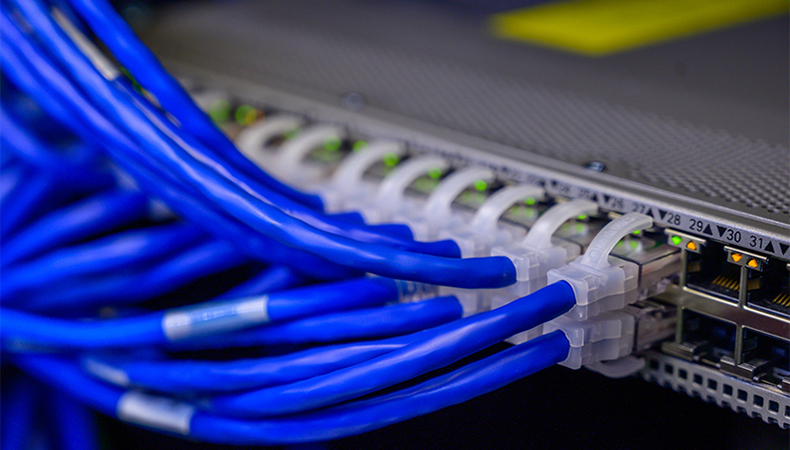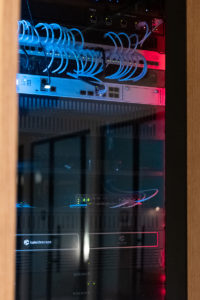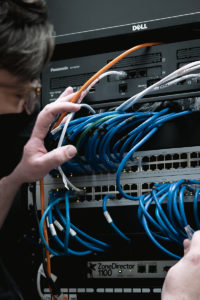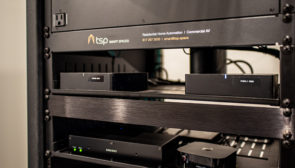The Importance of an Enterprise-Grade Network in Your Home

As of 2022, there are an estimated 14.4 billion connected devices worldwide. Every device we own can communicate with other devices, store data in a remote location, automate processes, or allow us to communicate with others. Given that we spend most of our time in our homes (even more now that work has become more flexible), having a robust network is more critical than ever. If you work from home or use IoT (Internet of Things) devices, an enterprise-grade network has become a must.
Why is an enterprise-grade network needed?
The internet isn’t just for surfing the web or checking Facebook anymore. Today, the internet powers your home, from door locks to climate control to lighting controls. It empowers us to work from home, connect with friends and family across the globe, or choose from a collection of thousands of movies to watch. The internet has become as much a part of our homes as the lighting, HVAC, or interior design. You want it to work consistently with no dead spots or areas of the house that get a weaker signal than others, and you need it to consistently deliver enough bandwidth to keep you online during your work Zoom calls while not kicking your family off of their work. For larger homes, the basic router and access points from your ISP just aren’t going to cut it – no matter what their glitzy advertising says.
Bandwidth and Wi-fi range
 An enterprise-grade network’s biggest benefit is a significant increase in bandwidth and Wi-Fi range. Your network needs to do more than keep your devices online. It needs to allocate the proper bandwidth to each so they can function seamlessly. A consumer-grade network won’t provide what you need if you run bandwidth-heavy applications like video conferencing or surveillance cameras.
An enterprise-grade network’s biggest benefit is a significant increase in bandwidth and Wi-Fi range. Your network needs to do more than keep your devices online. It needs to allocate the proper bandwidth to each so they can function seamlessly. A consumer-grade network won’t provide what you need if you run bandwidth-heavy applications like video conferencing or surveillance cameras.
In terms of range, a standard Wi-Fi router will reach up to 150 feet indoors and 300 feet outdoors, but that doesn’t take into account going through walls, floors, or a guest house on the property. Sure, you can install Wi-Fi extenders, but unless you bring in an expert to set up your APs (access points) correctly, you will run into dead zones or slow speeds. According to the HTA, whenever you need Wi-Fi coverage to extend over 2000 square feet (most luxury homes today far exceed that number), you’ll need multiple access points, which are standard practice for enterprise-grade systems.
And often, you need more than just the bare minimum for coverage. Today’s high-speed WIFi protocols (like WiFi 6 and WiFi 6e) operate on frequencies with super high performance that drops off quickly with range. So while you might be able to get 3 bars a couple of rooms away, the speed and performance will not match the full capability of your Internet connection.
Scalability
Another benefit of an enterprise-grade network is that it’s built to scale with you. Whether that is adding to your home, building a guest house, or just being ready when the next wave of connected devices becomes available (even ten years ago, the idea of a connected refrigerator would be laughable). Building your network so it’s ready to expand prepares you for the future and saves you huge costs down the road.
Cybersecurity
Finally, cybersecurity plays a huge role in what an enterprise-grade network can offer you and your home. Today’s work is done from anywhere we’re connected. This is more than just in the office. It’s on the road, at a local Starbucks, and often in our homes. But when the lines of work and personal data start blurring, you want to ensure your digital security is tight enough to protect both.
An enterprise-grade network is set up with the same firewalls, threat monitoring, and cybersecurity protections most organizations enjoy in their headquarters. An enterprise-grade network will consist of multiple VLANs (virtual local area networks) to segment your network, separating your IoT devices from your work devices, and mitigating the damage if a breach occurs. (Learn more about VLANs in our article “Why Your Home’s Cybersecurity is More Important than Ever”)
Why do you need an integrator?
 If the above has convinced you of the importance of bringing an enterprise-grade network to your home, what’s the next step? This is where we recommend bringing in a smart home integrator with networking experience. You can go to Best Buy or Amazon to buy networking equipment. But without pairing your equipment with certified designers and programmers and remote support, you won’t have an enterprise-grade experience.
If the above has convinced you of the importance of bringing an enterprise-grade network to your home, what’s the next step? This is where we recommend bringing in a smart home integrator with networking experience. You can go to Best Buy or Amazon to buy networking equipment. But without pairing your equipment with certified designers and programmers and remote support, you won’t have an enterprise-grade experience.
At TSP Smart Spaces, we’ve been building and supporting smart homes for over a decade and have been an IT company for even longer (30 years as of 2022!). The same best practices and expert technicians our clients enjoy are also brought to our residential clients. That means the same networks that the Boston Celtics and Accel have are available for you and your home.
A smart home isn’t smart unless it works
Unless your home is built with a robust network that works every time, it’s not truly a smart home. Our goal at TSP is not just to install the latest technology and make your home look extraordinary. We aim to ensure you have a home that works for you and creates a truly unique experience. You shouldn’t spend any time at all worrying about bandwidth, scalability, or cybersecurity. It should just work. That’s where we come in. Contact us today to discuss how we can bring an enterprise-grade network to your home.



